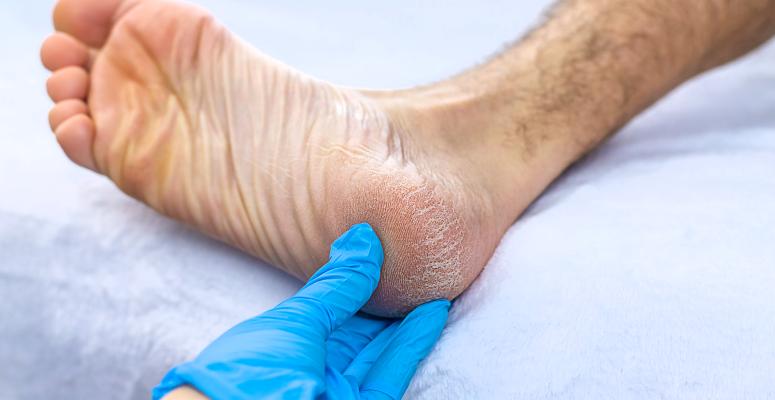
If you’ve ever gone for a walk and felt a constant pain in your heel that just wouldn’t go away, you may have experienced heel bursitis. It’s a condition that affects the fluid-filled sacs called bursae that are located in the back of your heels. When the sacs become swollen and inflamed, foot and ankle pain or discomfort often ensue.
What are some of the most common signs?
There are a few ways that you can tell whether or not you have heel bursitis. You can reference the most common signs and symptoms listed below to determine if any are familiar to you. Still not sure whether you're dealing with heel bursitis? Your best bet is to get a professional diagnosis from a qualified care provider, like a physical therapist. Not only can they help you identify your condition, but they can address the best course of action during treatment as well.
- Foot or ankle swelling — One of the most common signs of heel bursitis is swelling in the foot or ankle. The inflammation of the bursae can cause significant swelling around the area that is affected. Ankle bursitis is similar to heel bursitis and may cause swelling near to the foot.
- Pain when walking — Another indicator of heel bursitis is a pain in the heel when walking. Inflammation of the bursae in the heel can cause significant pain in addition to swelling, especially when walking or doing other physical activities.
- Pain when wearing certain shoes — Some people with this condition will also experience pain when they wear certain types of unsupportive shoes. It’s not uncommon for heel bursitis to be accompanied by frequent usage of poor-quality footwear.
- Pain when your weight is on your toes — Surprisingly, this condition can also cause pain when the weight of your body is on your toes. Some patients report having pain when they stand on the tips of their toes or place all their weight on the front of their feet.
- Extra warm sensation around the heel — Some with heel bursitis will have extra warmth around the skin of their affected heel. The extra warmth is a symptom of inflammation in the bursae of the heel.
What are some of the most typical causes of heel bursitis?
If you have heel bursitis but you're not sure what exactly has caused it, there might be a few reasons why:
- Frequent physical activity — Frequent physical activity is one of the common causes of heel bursitis. Inflammation of the bursae most often results from chronic overuse. If you’re a runner or someone who partakes in frequent bouts of physical activity, you may be more likely to experience heel bursitis.
- Poor-fitting shoes — Another common cause of inflammation in the heel is poor-fitting shoes. Some shoes, like flip-flops or flat-footed shoes, are known to cause inflammation in the heel bursae and even contribute to already developing inflammation in the heel.
- Sudden and intense physical activity —If you’ve recently performed sudden or intense bouts of physical activity that your body isn’t used to, this could be a reason for your heel inflammation. Bursitis can come on when the heel is placed under sudden and unusual amounts of stress.
- Inflammatory joint diseases — If you have any of these inflammatory joint diseases — rheumatoid arthritis, psoriatic arthritis or ankylosing spondylitis — they may be behind your heel bursitis.
How can physical therapy help treat heel bursitis?
Physical therapy is an effective treatment method for those who have heel pain. PT specialists can determine the root cause of your inflammation. From there, they can guide you through several movements and exercises designed to reduce inflammation and pain. They can help you minimize the effects of your symptoms over time so that you can live more comfortably and without provoking future inflammation in your heels.
Physical therapy is a minimally invasive, gentle treatment method that doesn’t involve any unnecessary poking and prodding, like surgery would. It’s done throughout several sessions and always involves patient input. Most physical therapists encourage their patients to be active participants in their care, which is one of the reasons why physical therapy is such a great treatment method.
Don't delay getting physical therapy treatment any longer. Alliance PTP can help you find the treatment you need as soon as possible
You probably don’t have to go as far as you think to get help with your heel bursitis. After all, Alliance Physical Therapy Partners has practices across the country where you can find the physical therapy you need.
And if there isn’t one near you, don’t worry! We also offer highly effective and affordable virtual care in nearly every U.S. state.
So, don’t keep letting your symptoms affect your day-to-day life. Get in touch with our team today so we can help you find the physical therapy that’s right for you.
Get Help at a Location Near You
